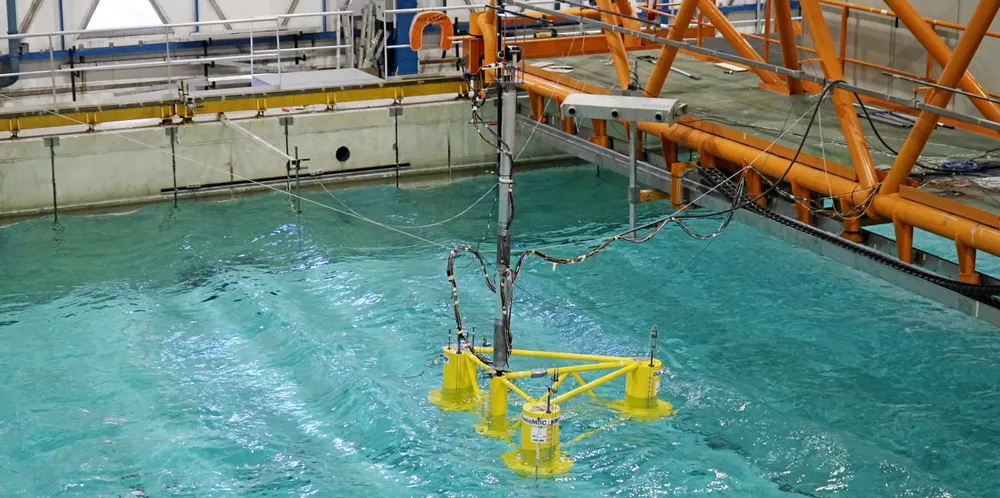Model behaviour | Novel GustoMSC floating wind design sails through tank tests
Part-scale Tri-Floater concept trialled at Océanide R&D wave basin in France now slated to be ready for floating wind tenders 'in 2022 and beyond', says contractor

An innovative harsh-environment floating wind design from Dutch maritime contractor GustoMSC has completed breakthrough part-scale model tests at the Océanide R&D wave basin in France.
A 1:50 version of the Tri-Floater, a semi-submersible platform engineered for ultra-large turbines, passed key trials that subjected the concept to simultaneous wind, wave, and current loading in the tank.
“Due to the optimised geometry of the submerged structure, the Tri-Floater design exhibited low accelerations at the wind turbine nacelle during the model tests, in good agreement with numerical predictions,” said GustoMSC.
“Lower accelerations are particularly beneficial since these translate to lower load levels and ultimately lower steel weight of the structure which is one of the most important cost drivers in floating wind.”
The model, which was mated with a 15MW reference wind turbine from the US National Renewable Energy Laboratory, was trialled in a “wide range” of conditions, including facing significant wave height of 13.5 metres and wind speeds of 190 km/h, to demonstrate its “suitability… for most of the floating wind sites currently being considered”, the company added.
“Besides representing actual site conditions in the basin, a large set of more fundamental tests were performed, investigating various hydrodynamic properties of the floater in greater detail,” said GustoMSC, noting the Océanide tank results would feed back to “further improving the quality of numerical simulations performed”.
GustoMSC expects the Tri-Floater will be contender for commercial floating wind tenders “in 2022 and beyond”.